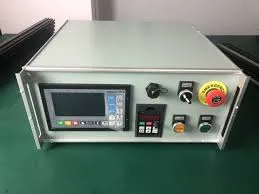The Importance of Tape Rubber Insulation in Modern Applications
In the ever-evolving landscape of technology and electrical engineering, insulation materials play a critical role in ensuring safety, efficiency, and functionality. One such essential insulation material is tape rubber insulation, a versatile solution that has gained prominence across various industries. This article delves into the characteristics, applications, benefits, and potential future developments of tape rubber insulation.
Understanding Tape Rubber Insulation
Tape rubber insulation is primarily composed of a rubber-based material that serves as an effective barrier against electrical current. It is designed to withstand a range of environmental conditions, making it suitable for both indoor and outdoor applications. The unique properties of rubber, such as its flexibility, durability, and excellent electrical resistance, make it an ideal choice for insulating wires, cables, and other electrical components.
The insulation tape usually comes in rolls of varying widths and thicknesses, allowing for easy application and customization to meet specific needs. Its adhesive backing ensures that the tape adheres securely to surfaces, providing a reliable seal that minimizes the risk of moisture and dust infiltration, which can compromise the integrity of electrical systems.
Applications in Various Industries
Tape rubber insulation is utilized in numerous applications across different sectors. In the electrical and telecommunications industry, it is commonly used for wrapping wires and cables to prevent short circuits and electrical failures. The insulation capabilities of the tape help in maintaining optimal performance in wiring systems, safeguarding them against potential hazards.
In the automotive sector, tape rubber insulation is often employed to protect wiring harnesses and other electrical components from heat, vibration, and moisture. Its resilient nature ensures that components remain functional even in challenging environments, contributing to the longevity and reliability of vehicles.
Moreover, tape rubber insulation is indispensable in construction and manufacturing. It is frequently used to insulate pipes and tubes, preventing energy loss and protecting against thermal changes. By maintaining the temperature of fluids transported through these pipes, tape rubber insulation can lead to significant energy savings.
tape rubber insulation

Benefits of Using Tape Rubber Insulation
One of the principal benefits of tape rubber insulation is its excellent electrical properties. With high dielectric strength, it can effectively prevent electrical leakage and short-circuiting, thus enhancing the overall safety of electrical installations. This is particularly crucial in industries where even minor electrical faults can lead to catastrophic consequences.
Another significant advantage of tape rubber insulation is its durability. Rubber-based materials are inherently resistant to wear and tear, making them suitable for use in harsh environments. They can withstand extreme temperatures and resist chemical exposure, ensuring that they maintain their insulating properties over time.
Furthermore, the flexibility of tape rubber insulation allows for easy application on irregular surfaces and complex configurations, making it an ideal choice for various installations. Its quick installation process reduces labor costs and minimizes downtime in production operations.
Future Developments and Trends
As technology advances, the demand for more innovative insulation materials grows. The future of tape rubber insulation may see enhancements in terms of performance and environmental sustainability. Ongoing research into biodegradable materials and eco-friendly formulations may lead to the development of tape rubber insulations that minimize ecological impact while maintaining their protective characteristics.
Additionally, the integration of smart technology into insulation materials is a trend to watch. Embedded sensors that can monitor temperature changes or detect faults in wiring systems could enhance the functionality of tape rubber insulation, providing real-time data to facility managers and engineers.
Conclusion
Tape rubber insulation has established itself as a critical component in a wide array of applications due to its robust properties and versatility. Its ability to protect electrical systems, enhance safety, and provide energy efficiency makes it an invaluable resource in modern engineering and construction. As industries continue to evolve and embrace new technologies, tape rubber insulation will undoubtedly play a pivotal role in ensuring that electrical systems remain safe, efficient, and reliable for years to come. With ongoing advancements on the horizon, the future of tape rubber insulation looks promising, suggesting that it will remain a staple in the toolkit of engineers and technicians worldwide.
-
XIANGFAN Rubber Tape-Ultimate Solutions for All Your Insulation NeedsNewsJun.24,2025
-
XIANGFAN Rubber Tape-Protection for Industrial and Residential ApplicationsNewsJun.24,2025
-
XIANGFAN Rubber Tape: Superior Safety and Sealing for Demanding EnvironmentsNewsJun.24,2025
-
XIANGFAN Rubber Tape: Reliable Solutions for Every Electrical ChallengeNewsJun.24,2025
-
XIANGFAN Electrical & Industrial Tape: Powering Reliability Across IndustriesNewsJun.24,2025
-
XIANGFAN Electrical & Industrial Tape: Excellence in Every ApplicationNewsJun.24,2025
